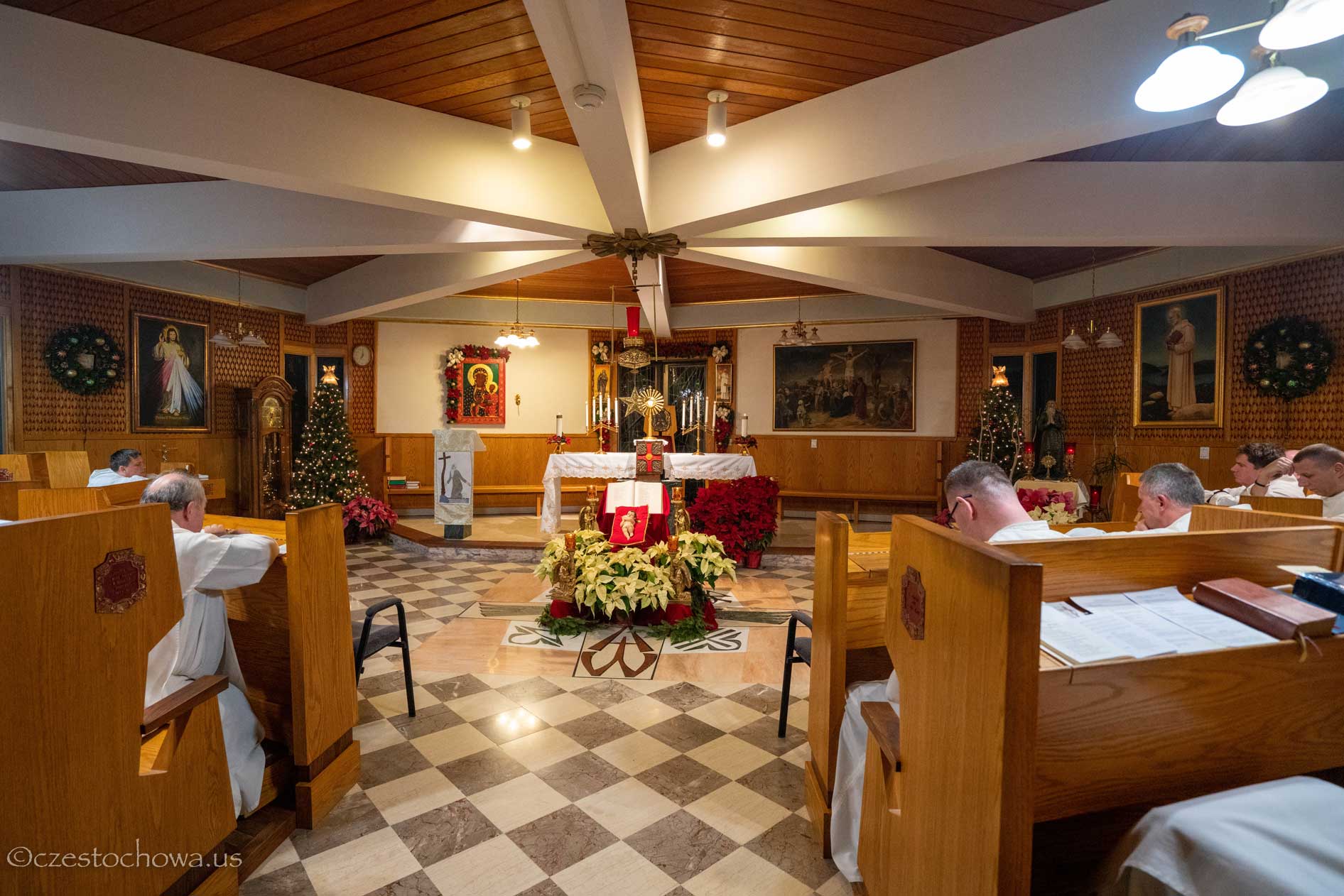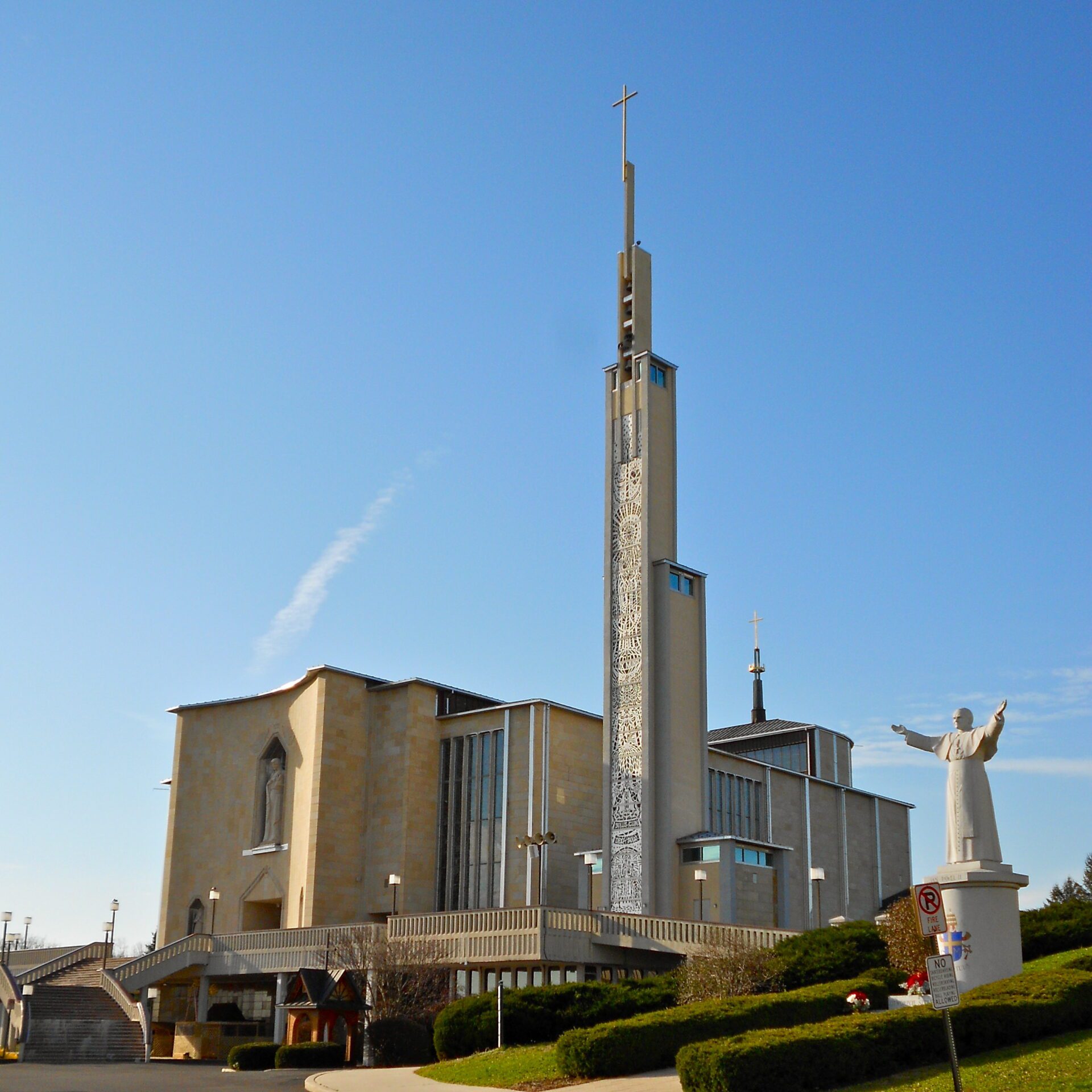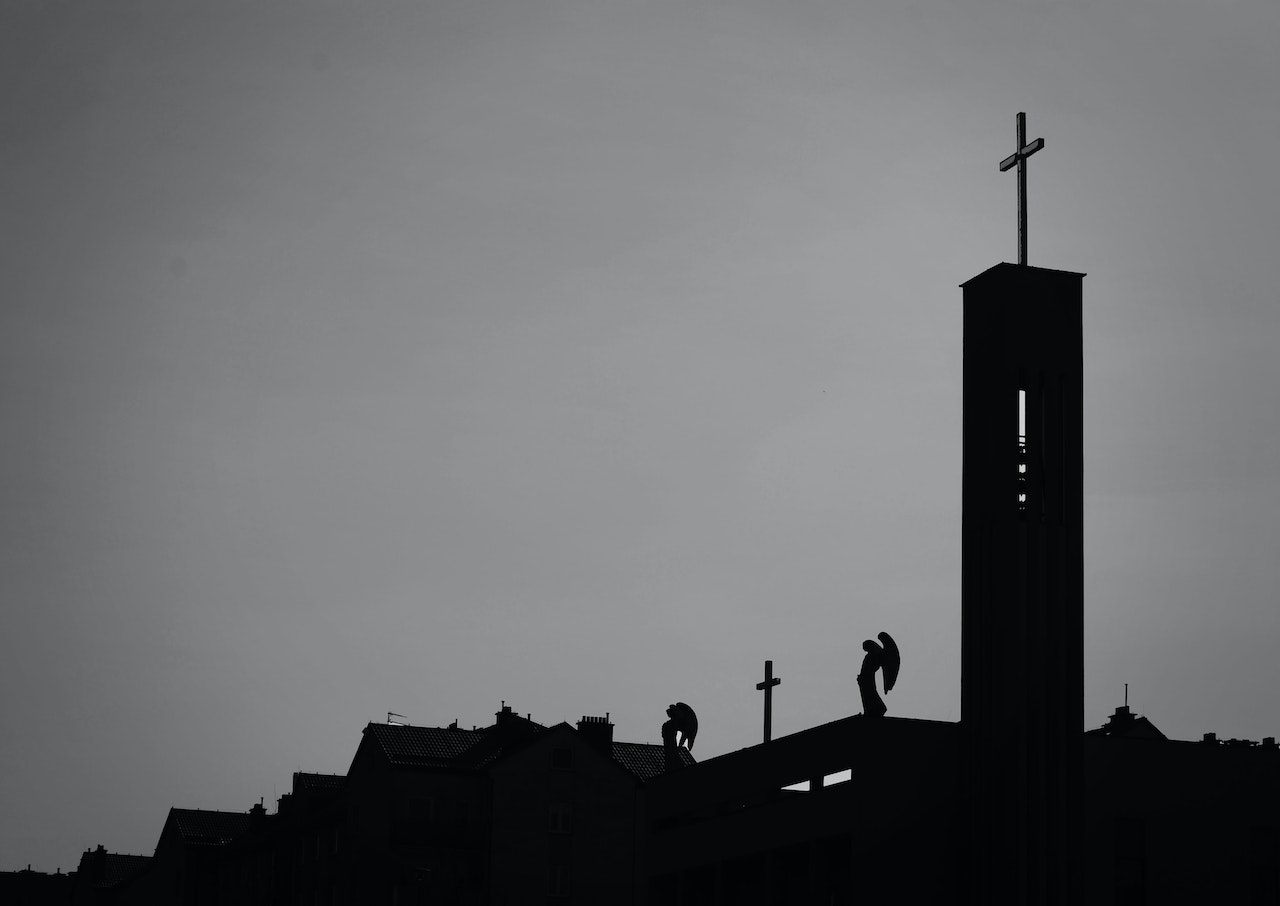Poles and Catholicism: faithful everywhere

Poles set off on their journey across the Atlantic with hopes, dreams, and plans, as well as with traditions, culture, and faith deeply engraved in their hearts, to which they remained faithful thousands of kilometers from their homeland, which was experiencing different turns of fate. One of the monuments to this fidelity is the “American Czestochowa.”
By Radosław Wojtas
We started modestly. On October 1st, 1608, the British ship “Mary and Margaret” arrived on the coast of present-day Virginia. It set sail across the Atlantic via the initiative of Captain John Smith to reach the first permanent settlement in North America by the English – the second European colonialists, after the Spanish – in Jamestown. It was aboard this ship that the first Poles arrived in North America. Some – Jan Bogdan, Michal Lowicki, Jan Mata, Stanislaw Sadowski, Zbigniew Stefanski – are known by name to this day. Craftsmen. Specialists in the production of soap, potash, and glass.
These people set out for the unknown at a time when the Polish-Lithuanian nobles’ republic was at the height of its power, in a period that went down in history as gold and silver, when nothing foreshadowed the impending disaster and loss of independence for years to come. The first Polish settlers in North America became known as one of the most active in the colony. Poles started a glassworks and factory producing tar, potash, and ship ropes. They did not hesitate to fight for their own. When they were denied the right to vote in 1619, Poles organized the first strike on American soil, which put them on equal footing with other residents. It was to the credit of the Poles that the life of Jamestown President John Smith, who had been kidnapped by Native Americans, was saved.
Over the following centuries, millions of Poles traveled across the Atlantic for various reasons. They set off on their journey with hopes, dreams, and plans, as well as with traditions, culture, and faith deeply engraved in their hearts, to which they remained faithful thousands of kilometers from the homeland while experiencing different turns of fate. One of the monuments to this fidelity is the Shrine of Our Lady of Czestochowa in Doylestown. This story is about this place and about some of those thanks to whom the Polish community, which today constitutes about 10 million people, can entrust their petitions and give thanks at the shrine known as the “American Czestochowa.”
THE PAULINE FATHER WITH THE PAINTING
The history of the National Shrine of Our Lady of Czestochowa in Doylestown begins in 1951. The beginning is again modest because it is the journey of one man – a Pauline monk, Father Michael Zembrzuski. This monk did not come to the United States completely alone. He had with him a copy of the Miraculous Image of Our Lady of Jasna Gora, blessed by Pope St. John XXIII. He carried in his heart the dream of establishing an American shrine of Our Lady of Czestochowa based on the model of Jasna Góra in Poland.

Father Zembrzuski devoted the first years of his presence in the States to missionary work among Poles, Hungarians, and Italians. To understand why the priest worked precisely among these minorities, we need to go back in time a bit and trace his remarkable pastoral path. Born in Mazovia on December 16th, 1908, the oldest of seven children of Maximilian and Wiktoria Zembrzuski (born Wiktoria Tańska), entered the lower seminary of the Pauline Fathers in Czestochowa at the age of 13. He completed his classical middle school and philosophical studies in Cracow, took his first vows in 1927, his perpetual vows in 1933, and was ordained a priest at Jasna Gora on March 31, 1934. At 26 years old he had been associated with the Pauline Fathers for half of his then short life.
We do not have enough space here to go into his biography in more detail, so let us just mention that while he was still a student, the Pauline Order assigned him to work in Hungary, where he stayed until 1948. He would probably have been there even longer if it weren’t for the fact that the Communist authorities in Hungary ordered him to leave the country. He ended up in Rome and there he worked with the Poles until 1951 – when he was sent to America. Worthy of recognition and worth noting is Father Zembrzuski’s wartime episode. While in Hungary, he helped thousands of refugees from Poland, including Jews, to whom he issued baptismal certificates so they could get through Hungary to safer countries. Through these actions, he saved more than 1,000 people!
But let us go back to the 1950s. Two years after arriving in the U.S., Fr. Michael Zembrzuski already has a piece of land purchased in Doylestown, Pennsylvania, and permission from the Holy See to establish a monastery and shrine on it. The word “modestly” has already been mentioned several times in this text, but it is impossible not to repeat it now, writing about the beginnings of the “Polish Jasna Gora.” The first Mass is celebrated here on June 26th, 1955, in a wooden barn adapted as a chapel. Its consecration opens a new center of Marian devotion and inaugurates the sanctuary, to which pilgrimages immediately begin to draw. The first of these takes place on the very day of the chapel’s dedication ceremony.

CLOSER TO MOTHER
Pilgrims from all over the United States are drawn to the chapel and the replica of the miraculous image. There are many of them. Too many for the “capabilities” of the tiny wooden chapel. A decision is quickly made to develop a place of devotion to Mary. With the financial help of the faithful, in 1960 Fr. Zembrzuski buys more land, four years later the cornerstone ceremony takes place, and in 1966 – on the millennium of Poland’s baptism – in the presence of thousands of pilgrims and the 36th President of the United States, Lyndon Baines Johnson, Archbishop John King solemnly consecrates the new shrine in honor of Our Lady of Czestochowa. The Primate of Poland was to act as the main celebrant, but Stefan Wyszynski did not receive permission from the communist authorities to go, so his (in)presence is symbolized by an empty chair with white and red flowers and a crown of thorns placed on the seat – as a sign of the suffering of Poles and the Church in their own country.
The shrine is becoming an important place of worship on the one hand, and an important Polish and patriotic center on the other. The temple’s stained-glass windows depict important moments in Polish history, and the church houses an urn with soil from the Cemetery of Lviv Eaglets and an urn with the heart of Ignacy Paderewski. Since 1967, an American-Polish festival has been held here, the largest Polish festival in the region attracting more than 25,000 people each year. In 1984, it was attended by US President Ronald Reagan.
The shrine was visited three times by Karol Wojtyla – twice as archbishop of Krakow and once after his election to the Holy See. At that time, he blessed and signed a copy of the Icon of Our Lady of Czestochowa (it is now located in the chapel dedicated to Her, the so-called Lower Church). Since 2009, the Shrine of Our Lady of Czestochowa in Doylestown has carried the title of “National Shrine of the United States.”
The shrine also faced difficult moments in its history. Fr. Zembrzuski for a long time was facing financial problems. They were successfully resolved, and after emerging from these troubles, a ceremony was held at the shrine… a symbolic “debt burning.”

FOR ETERNITY
Over the years, a large necropolis emerged near the shrine. It has more than 6,000 graves and is the largest Polish cemetery in the world. A figure of a kneeling hussar, cast in bronze and set on a granite pedestal stands at 10 meters in height. This is the Avenger Monument by Andrzej Pitynski, dedicated to the victims of the Katyn massacre. About 2,000 Polish soldiers rest beneath.
The mortal remains of the shrine’s founder are also laid to rest in this necropolis. Fr. Michael Zembrzuski died on January 16th, 2003, on the patronal feast of the Pauline Order – the day of Our Lady Queen of Hermits. He lived to be 94 years-old, having spent 68 of them in the priesthood. At the time of his passing, he was the oldest Pauline priest in the world. He was given a funeral with honors, with crowds of the faithful paying their respects before making his final earthly journey. On the way to his resting place, the procession stopped at the first wooden chapel, into which the coffin with Fr. Zembrzuski’s body was laid for a short time – as a farewell to his beloved place of prayer, where he was “face to face” with Mary.
This article was published in Polish in the Do Rzeczy weekly in July 2023.




